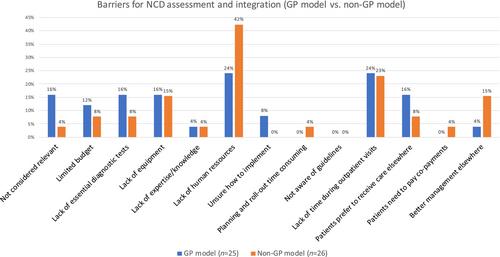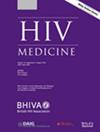Differences in integrated assessment and management of non-communicable diseases (NCDs) for people with HIV across the WHO European region
Abstract
Objectives
We aimed to assess the extent of integration of non-communicable disease (NCD) assessment and management in HIV clinics across Europe.
Methods
A structured electronic questionnaire with 41 multiple-choice and rating-scale questions assessing NCD assessment and management was sent to 88 HIV clinics across the WHO European Region during March–May 2023. One response per clinic was collected.
Results
In all, 51 clinics from 34 countries with >100 000 people with HIV under regular follow-up responded. Thirty-seven clinics (72.6%) reported shared NCD care responsibility with the general practitioner. Systematic assessment for NCDs and integration of NCD management were common overall [median agreement 80%, interquartile range (IQR): 55–95%; and 70%, IQR: 50–88%, respectively] but were lowest in central eastern and eastern Europe. Chronic kidney disease (median agreement 96%, IQR: 85–100%) and metabolic disorders (90%, IQR: 75–100%) were regularly assessed, while mental health (72%, IQR: 63–85%) and pulmonary diseases (52%, IQR: 40–75%) were less systematically assessed. Some essential diagnostic tests such as glycated haemoglobin (HbA1c) for diabetes (n = 38/51, 74.5%), proteinuria for kidney disease (n = 30/51, 58.8%) and spirometry for lung disease (n = 11/51, 21.6%) were only employed by a proportion of clinics. The most frequent barriers for integrating NCD care were the lack of healthcare workers (n = 17/51, 33.3%) and lack of time during outpatient visits (n = 12/51, 23.5%).
Conclusion
Most HIV clinics in Europe systematically assess and manage NCDs. People with HIV appear to be screened more frequently than the general population at the same age. There are, however, larger gaps among eastern European clinics in general and for clinics in all regions related to mental health, pulmonary diseases and the employment of some essential diagnostic tests.


 求助内容:
求助内容: 应助结果提醒方式:
应助结果提醒方式:


